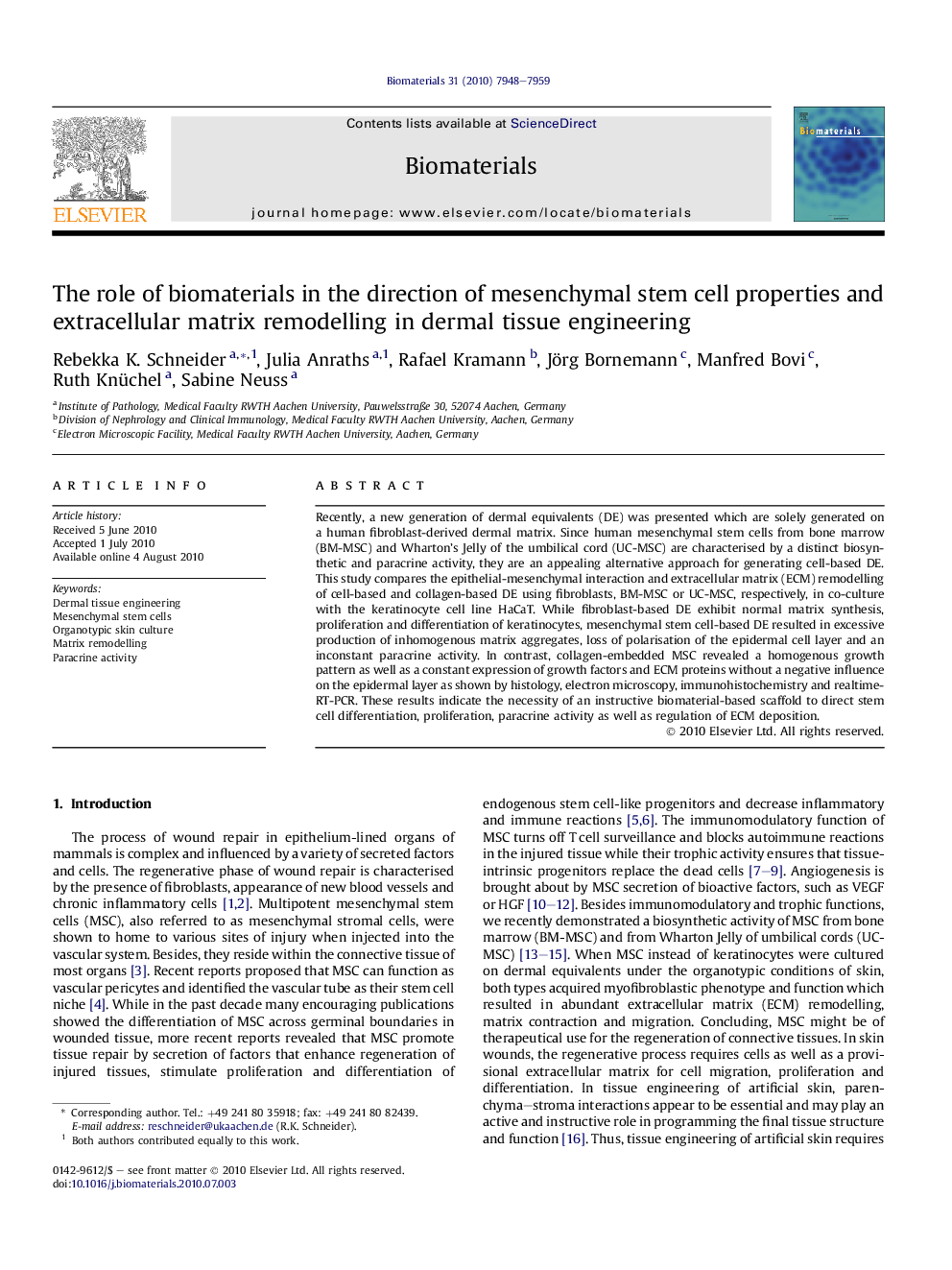| Article ID | Journal | Published Year | Pages | File Type |
|---|---|---|---|---|
| 8050 | Biomaterials | 2010 | 12 Pages |
Recently, a new generation of dermal equivalents (DE) was presented which are solely generated on a human fibroblast-derived dermal matrix. Since human mesenchymal stem cells from bone marrow (BM-MSC) and Wharton’s Jelly of the umbilical cord (UC-MSC) are characterised by a distinct biosynthetic and paracrine activity, they are an appealing alternative approach for generating cell-based DE. This study compares the epithelial-mesenchymal interaction and extracellular matrix (ECM) remodelling of cell-based and collagen-based DE using fibroblasts, BM-MSC or UC-MSC, respectively, in co-culture with the keratinocyte cell line HaCaT. While fibroblast-based DE exhibit normal matrix synthesis, proliferation and differentiation of keratinocytes, mesenchymal stem cell-based DE resulted in excessive production of inhomogenous matrix aggregates, loss of polarisation of the epidermal cell layer and an inconstant paracrine activity. In contrast, collagen-embedded MSC revealed a homogenous growth pattern as well as a constant expression of growth factors and ECM proteins without a negative influence on the epidermal layer as shown by histology, electron microscopy, immunohistochemistry and realtime-RT-PCR. These results indicate the necessity of an instructive biomaterial-based scaffold to direct stem cell differentiation, proliferation, paracrine activity as well as regulation of ECM deposition.
